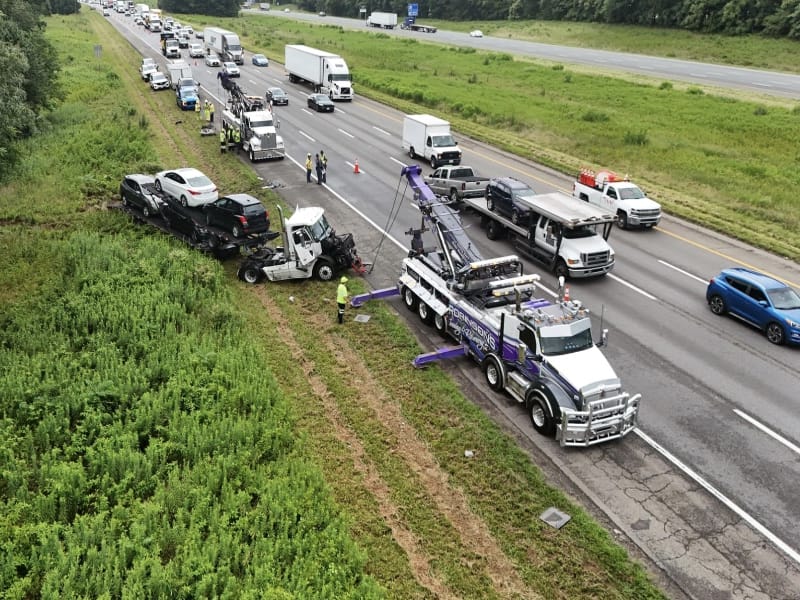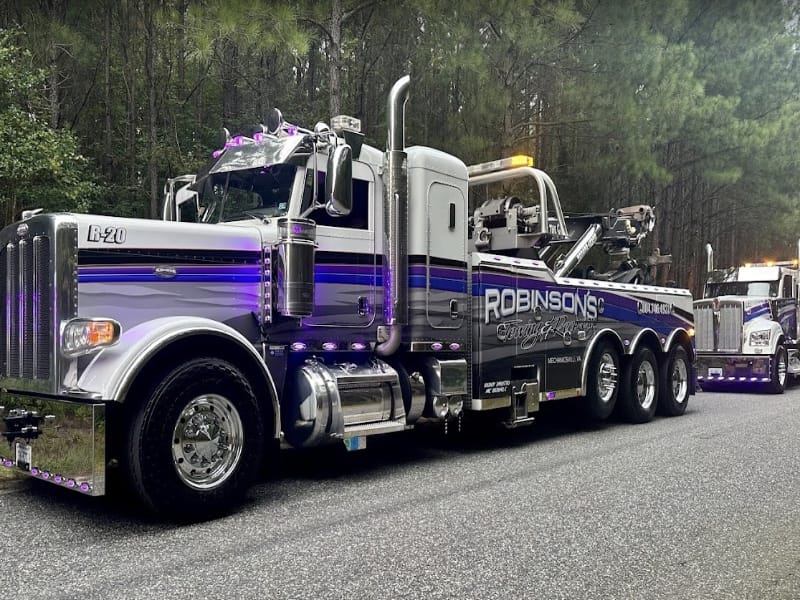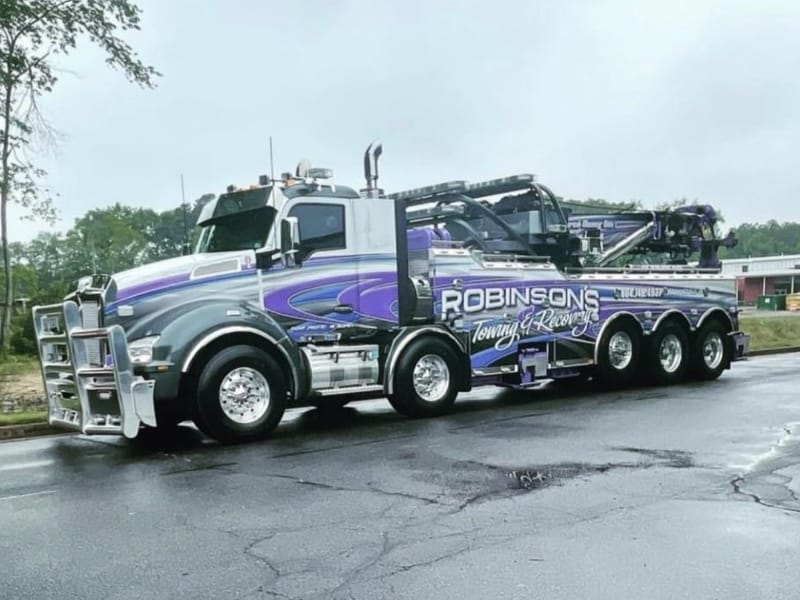From Jackknifed Semis to Overturned Trailers
Recovering big rigs from traffic incidents can quickly turn into a high-stakes operation where every decision matters: traffic is stalled, hazards loom, and the clock is ticking. A jackknifed semi or an overturned trailer is as much a mechanical problem, as it is a serious road hazard. As tow truck operators, we never know what to expect when arriving at an incident site. Let’s take you behind the scenes of our I-95 heavy towing operations to show how we tackle these challenges while keeping traffic moving.

Responding to the Call: What Happens First
When an incident involving a heavy vehicle occurs on a highway, time is critical. Our team prioritizes getting to the scene quickly to assess the situation. The first steps in any recovery are:
Securing the Scene
Safety starts with securing the area. We work alongside local law enforcement and emergency services to block off lanes and direct traffic. Flashing lights, cones, and signage ensure approaching vehicles are aware of the hazard ahead.
Evaluating the Incident
Once the site is safe, we evaluate the situation. The truck’s size, load type, position, and any potential damage to the highway itself determine how we approach the recovery.
Tools of the Trade: Equipment That Gets the Job Done
Recovering big rigs from incidents isn’t a one-size-fits-all operation. We rely on our tools of the trade tailored for I-95 heavy towing jobs:
- Heavy-duty wreckers: These tow trucks are equipped to handle vehicles weighing over 80,000 pounds, ensuring even the largest semis can be managed.
- Winches and rigging systems: These tools are essential for pulling vehicles out of ditches or back onto the road.
- Airbags and cranes: For overturned trailers, airbags help lift the load safely, while cranes can hoist and reposition vehicles with precision.
By combining these tools, we can tackle even the toughest recoveries.

Step-by-Step: Recovering a Big Rig on the Highway
Each recovery is unique, but the process generally follows these steps:
- Stabilizing the Vehicle
Stability is the first concern. A semi leaning on its side or hanging off the shoulder must be secured to prevent further movement. We use rigging straps and anchors to hold the truck steady while we plan the next steps. - Removing the Load if Necessary
If the truck is fully loaded, the weight may make it impossible to recover in one piece. In these cases, we unload cargo using forklifts, cranes, or manual labor to lighten the load. - Winching or Lifting
With the vehicle stabilized, we use winches to pull it back onto the roadway or cranes to lift it off barriers. For vehicles stuck in soft ground or overturned, airbags can provide additional support during recovery. - Clearing the Roadway
Once the truck and trailer are upright and ready for towing, we clean the area of debris to ensure the highway is safe for other motorists.
Safety: The Core of Every Recovery Operation
Highway recoveries are dangerous for everyone involved. That’s why we never compromise on safety. Our team receives ongoing training to handle I-95 heavy towing scenarios, from proper rigging techniques to communication protocols with traffic management.
Key safety measures we implement include:
- Coordinating with law enforcement to manage traffic flow.
- Using high-visibility gear and signage.
- Conducting thorough risk assessments before moving vehicles.

Robinson’s Towing: Your I-95 Heavy Towing Specialists
Recovering big rigs on highways is about restoring traffic flow, protecting other motorists, and minimizing the economic impact of delays. The scale of these operations makes them both challenging and critical, especially on the busier highways in the country. From securing the scene to lifting massive loads with cranes or winches, I-95 heavy towing is a complex process that demands precision.
The next time you see a big rig accident, remember the teamwork, tools, and expertise that go into managing highway recoveries and into every I-95 heavy towing operation we complete. Each I-95 heavy towing job is a coordinated effort to ensure that not only is the truck removed, but the roadway is safe and operational as quickly as possible. We’re proud to be part of the solution that keeps our highways moving, one recovery at a time.

